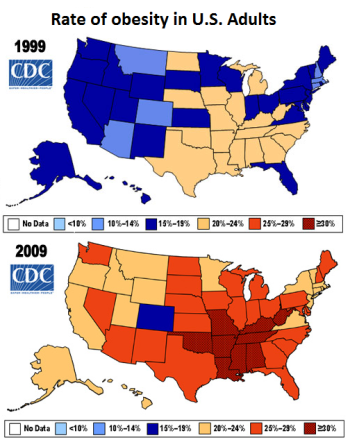 The Centers for Disease Control and Prevention (CDC) recently released its 2025 data on obesity in the United States, and the results are quite startling. In fact, during the past 20 years that the CDC has tracked it, there has been a dramatic increase in the prevalence of obesity with only Colorado and the District of Columbia coming in at a total population obesity rate of less than 20 percent.
The Centers for Disease Control and Prevention (CDC) recently released its 2025 data on obesity in the United States, and the results are quite startling. In fact, during the past 20 years that the CDC has tracked it, there has been a dramatic increase in the prevalence of obesity with only Colorado and the District of Columbia coming in at a total population obesity rate of less than 20 percent.
Obesity is defined as having a body mass index (BMI) of 30 or greater, which is calculated based on a person’s weight and height. Although BMI can be misleading for those who are highly athletic or muscular, the CDC uses this number because it provides a reasonable and generalized indicator of body fatness and weight categories that may lead to health problems. It is well documented that obesity is a major risk factor for a number of health issues, including cardiovascular disease, certain types of cancer and type 2 diabetes.
The CDC also found that a whopping 33 states had a prevalence equal to or greater than 25 percent, and nine of these states (Alabama, Arkansas, Kentucky, Louisiana, Mississippi, Missouri, Oklahoma, Tennessee and West Virginia) had a prevalence of obesity equal to or greater than 30 percent. What’s even more startling is how the numbers have changed over time. For example, in 1999 there were six states with obesity rates of 14 percent or less — and no state had an obesity rate of more than 24 percent. Nowadays, though all states are struggling with obesity and at incredibly high rates, many states have a full third or more of the state’s population classified as obese. (To see this graphically, the CDC has a great obesity slideshow that you can watch that is just staggering.)
Have you noticed your state’s population become bigger and bigger?
